Longleat is one of the most unusual grand estates in the world. The house contains a wealth of treasures, while its parkland is full of African wildlife.
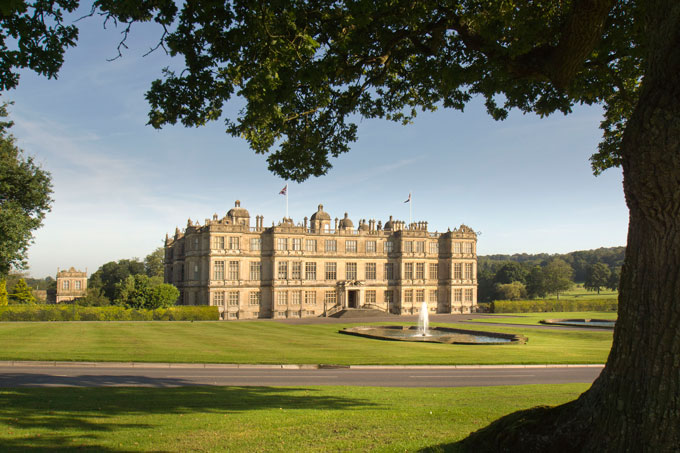

At the heart of a huge Wiltshire estate of rolling hills, dense copses and landscaped gardens stands Longleat House. It is a stunning example of Elizabethan architecture, completed in 1580: a residence with no fewer than 365 windows and 99 chimneys. There is the Great Hall, a host of secret passageways and cavities, two dining rooms and a Minstrels’ Gallery. From the roof there are spectacular views of the surrounding landscape, which contains an enormous maze and a safari park where big cats, giraffes and rhinos roam.
With so much bounty, it’s hard to imagine that Longleat was once a medieval priory with only 60 acres of land and a rabbit warren. Sir John Thynne (pronounced ‘thin’) purchased the lot for £53 in 1540.
“He is the history of Longleat,” says Ruth Charles, Visitor Manager at Longleat House, pointing to a portrait of a noble-looking fellow in the Great Hall. “Thynne was a ruthless character who worked his way up through the Tudor Court and married well, twice. It was risky, because in Tudor times if you poked your head above the parapet too far someone chopped it off. He was in the Tower of London twice and lived to tell the tale.”
The estate, in this green idyll near Warminster, is named after a man-made ditch that helped fuel the watermill that was here when the site was a priory. The word for such a ditch was ‘leat’, hence Longleat was born.
Since John Thynne built the house, it has hosted royalty and important dignitaries. All of the British monarchs since Queen Elizabeth I (who visited in 1574) have been to Longleat, with the exception of Queen Victoria, who famously never went anywhere after her beloved husband Albert died.

Originally, the house was comprised of two wings, and people would have to move through each room to get from one end to the other. This was typical of Elizabethan architecture, where corridors didn’t exist. “This is why four-poster beds were so popular – for privacy,” explains Ruth. Corridors were installed in the 1800s and this altered the entire Elizabethan internal structure but made the house easier to navigate.
The ante-library is distinctly Victorian in décor. Visitors have to look up to the ceiling to appreciate the full impact – it is decorated with ornate paintings surrounded by ostentatious detailing. This ceiling was installed as a result of the 4th Marquess’s adventures on The Grand Tour, a staple trip for aristocrats since the 17th century. He loved Italian Renaissance art and had Venetian paintings copied or even shipped over in the 1870s and 1880s to demonstrate how well-travelled he was. “That’s what houses like this are,” says Ruth. “Stately homes are status symbols.”
The rooms are luxurious and opulent: there are 22-carat-gold-leaf ceilings and vast mirrors placed high up to reflect their rich colour mixed with warm candlelight. There are two formal dining rooms – one that includes a fully laid table of porcelain that was bought especially for a visit by King George III in 1789. The servants accessed these grand rooms via concealed doors leading to the rat-run of passages at the core of the house.
The book collection at Longleat is significant: there are over 40,000 tomes here – most of which are in The Red Library. The collection includes important manuscripts such as the earliest known hand-drawn illustration of Titus Andronicus as well as a passage from the Shakespearean play.
There is also a Chaucer manuscript – in 1532 Sir John Thynne’s uncle had been editor-in-chief of the first collected edition of the works of the author, who has been dubbed ‘the father of English literature’.
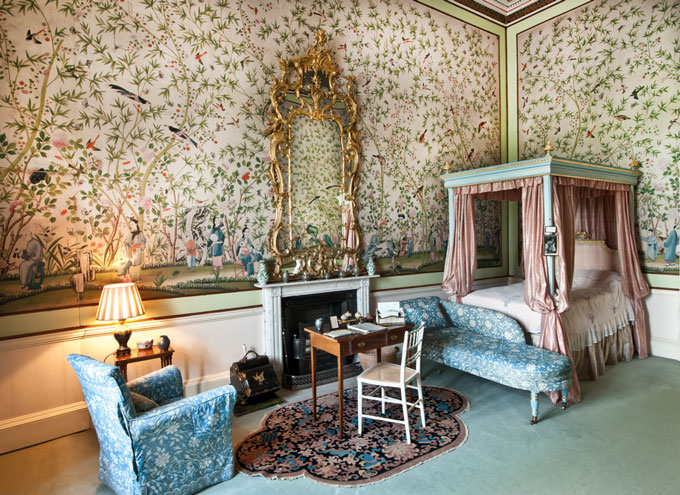
Upstairs, visitors can see the north side of the house, which was added in the 1800s. The nursery here is an Edwardian delight – with children’s christening gowns laid out on twin beds. There is a collection of enormous doll’s houses on display too. Staff on the estate would build the houses and the children who lived at Longleat would make the furniture. One tiny chair is fashioned out of a playing card. Keen observers will see that the houses plainly tell the story of the ‘upstairs downstairs’ class systems that were so integral to stately service.
All Elizabethan houses would have had long galleries, where exercise could be taken. Dresses in the 1500s were vast and cumbersome, designed for being admired and little else; ladies would not go for walks outside. The salon at Longleat was once such a space, but now it is filled with furniture as it became a grand reception room, demonstrating how social and recreational conventions changed over the years.
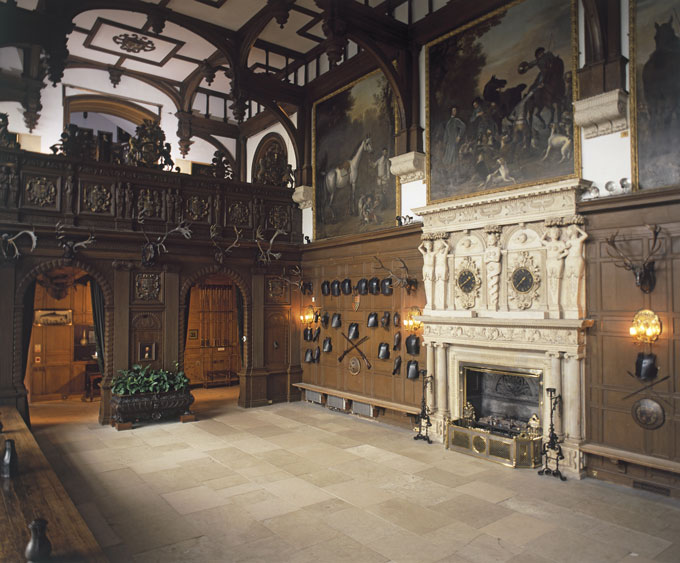
The Great Hall can be observed from above in the Minstrels’ Gallery. Music players were servants, so they would be kept out of sight, but in a position where they could still be clearly heard.
Directly across from the Minstrels’ Gallery is the Small Gallery: a doorway and balcony with dark wooden doors that open onto the Great Hall from the State Drawing Room. This unusual feature was created in 1663 after the English Civil War to honour a visit by the restored King Charles II. From here, he and his wife Queen Catherine could look down on everyone in the Great Hall.
The Prince of Wales Suites (named because of a painting of King Charles I’s brother, Henry Frederick, Prince of Wales, which hangs in the largest bedroom) are filled with treasures. These were the best bedrooms in the house and given to guests. The Chinese Room is covered in beautifully painted oriental chinoiserie.
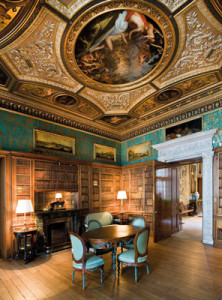
“Room measurements would be sent to China and wallpaper would be sent back in panels that could be pieced together like a jigsaw puzzle,” explains Ruth.
In the largest bedroom of the suite is a curious set of steps that are used to get into the gargantuan four-poster bed. On closer inspection, this Regency answer to the stepladder is revealed to contain a nighttime potty, a reminder that this huge house once stood with no running water or electricity.
Tours of the roof of the house are available, offering fantastic views of the property from above. Having such a vantage point gives guests the chance to truly understand the building. It’s also a lovely place to appreciate the grounds, which were designed by influential 18th-century landscape gardener Lancelot ‘Capability’ Brown, famous for creating surroundings that suggested complete naturalness, rather than man-made symmetry. The grounds also include the Longleat Hedge Maze, added to the estate in 1975. Made out of more than 16,000 yews and comprising almost two miles of paths, it is the longest maze of its kind in the world.
Centuries may have passed but Longleat is still run by the same family. It is home to Alexander Thynn, 7th Marquess of Bath, who adopted the current spelling of his surname in 1976. It was Lord Bath’s father, the 6th Marquess, who began to make Longleat’s recent history as unusual as its past.
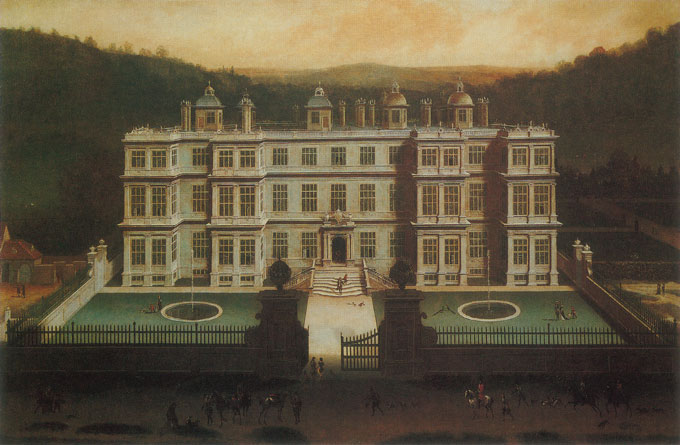
Private estates struggled to keep going after World War II and Longleat was no different. But the 6th Marquess of Bath was nothing if not enterprising. Longleat became the first stately home to welcome the public on a commercial basis, opening its doors to visitors on 1 April 1949. The decision was initially met with ridicule and horror by the upper classes, but soon large houses all over the county were following suit and inviting the public in. Longleat needed to raise its status once again and retain the monopoly on visiting public. Luckily the Marquess was friends with legendary circus master Jimmy Chipperfield, who helped him to establish Longleat as the first safari park in the world outside of Africa in 1966.
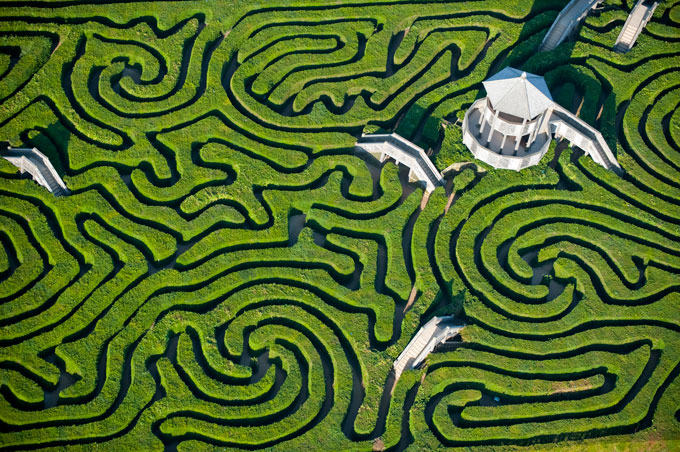
There is extensive newspaper coverage from that time detailing the terror of local residents who were convinced that there would be loose lions rampaging down Warminster High Street. In fact, the entire safari park is cocooned by a large band of private land (not to mention secure enclosures), so it feels completely remote. The move cemented Longleat’s status as one of the most extraordinary private houses in Britain.
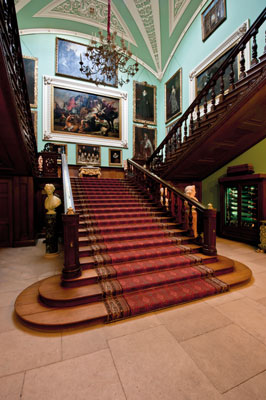
Touring the park in your car is a wonderful experience – even if monkeys do sometimes pull your windscreen wipers off. Alternatively you can book a VIP safari truck, driven by an expert ranger, to take you around. This means you’re allowed to go off the beaten track and can find yourself only a few metres away from lions and tigers.
Another of the biggest draws at Longleat are the rather eccentric private apartments of Lord Bath, where visitors can look at his personal artwork and mosaics, which have covered the ceilings and walls since the 1960s.
His style is incredibly bright and modern, attracting scorn from traditionalists. Looking into the Disco Room, which has dancing scenes all over the walls and a golden mosaic depicting can-can legs on the ceiling, it’s certainly a far cry from the historic magnificence of the opposite wing.
Lord Bath’s personal touch is absolutely everywhere, which is overwhelming, but must be considered part of this building’s evolution. “When you tell visitors that he painted the old chapel bright pink and yellow it can be hard for them to understand,” admits Ruth. “But he is part of a comprehensive story.”
He has certainly made his mark on an already extraordinary place, ensuring thousands of visitors descend on Longleat each day to envelop themselves in a tale that dates back hundreds of years and will continue to be told for many more to come.





 © 2024
© 2024